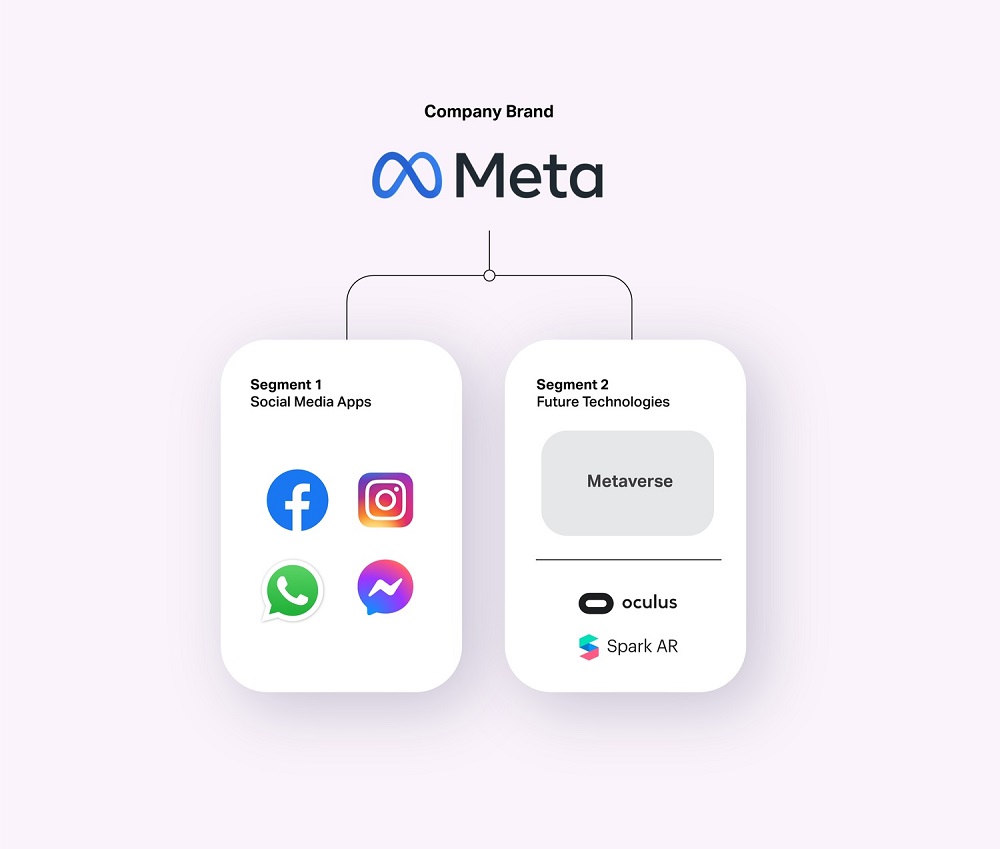
Facebook rebrand? Say what?
Facebook, one of the most used products in history has announced its rebrand to Meta and there is a huge splash on social media with online users sharing the news and having conflicting opinions. Perhaps there is a slight confusion of what is actually happening.
Facebook, the social media platform isn’t getting a rebrand as such, however, the company that owns Facebook, WhatsApp and Instagram, is.
Meaning Meta will be the Parent Brand for the social media apps, including Facebook, and any new products and services that may be completely irrelevant to social media.
The misconception
Facebook is indeed an iconic media brand however they claim that they want to be and do more than that. Drifting away from the misconception of Facebook being the social media platform only.
Having one of the social media apps being called the same name as the parent company creates confusion and lessens flexibility, meaning not being able to move forward and grow. It doesn’t encompass everything they do today and especially their future plans.
I think that there was just a lot of confusion and awkwardness about having the company brand be also the brand of one of the social media apps,” he said. “I think it’s helpful for people to have a relationship with a company that is different from the relationship with any specific one of the products, that can kind of supersede all of that. Mark Zuckerger
https://www.theverge.com/22749919/mark-zuckerberg-facebook-meta-company-rebrand
Meta solves the issue
Moving forward Meta wants the business to focus on two different segments. One for the social apps and one for future platforms. A new company brand to encompass everything they do and build.
Mark Zuckerberg states that the mission remains the same: bringing people together, still the company that designs technology around people. ‘Connection is evolving and so are we’.
Meta, derived from the Greek word beyond, symbolising that there is more to build.
A new brand system is applied
Creating a brand system that is able to hold under the different segments. The social media products such as WhatsApp, Instagram and Facebook, as well as any new products and future platforms.
Each product has a unique purpose and appeals to different audiences, based on culture, age, region, lifestyle, profession, et al. Therefore it is important that they are differentiated between them.
The image below illustrates some of the brands Meta currently holds and how they will probably be divided.

Brand architecture
Brand architecture is the way a company structures and presents its products to the target audience. It’s the relationship between brands within an organization and how they interact with one another.
Companies grow and target various audiences through different acquisitions and product lines, brand architecture is articulating a key structural system, helping each type of product to connect with the right audience and form perception.
It creates clarity by having a structure that achieves a robust system achieving flexibility and a system that can align and support any future plans; new lines of products, services.
There are a few strategies and methods applied to create brand architecture, each one serves a different purpose. See below.

Branded house (monolithic):
A single master brand, using one visual system. Sub-brands are differentiated by descriptors, not logos. Usually, they are easier to manage and consumers choose based on loyalty. However, it is harder to target a specific audience and their needs.
House of brands (pluralistic):
The house of brands is basically the opposite of the branded house. It detaches the master brand from any of its products. The parent company is irrelevant and ‘invisible’ to the individual products that it distributes, enabling them to even compete with each other. If one of the brands is under a crisis, the others would not be affected. With this method is easier to target desired audiences, yet it can be the most costly one.
Hybrid (endorsed):
This category allows products to be associated or disassociated (to any level) with the parent company. Usually to benefit from the visibility of the company’s parent. It can also be used in the reversed way; when a product should not be linked with another one or the company parent at all. It is the most flexible approach yet hard to comprehend and manage.
BUILDING BEAUTIFULLY BOLD BRAND SYSTEMS.
You need to load content from reCAPTCHA to submit the form. Please note that doing so will share data with third-party providers.
More Information